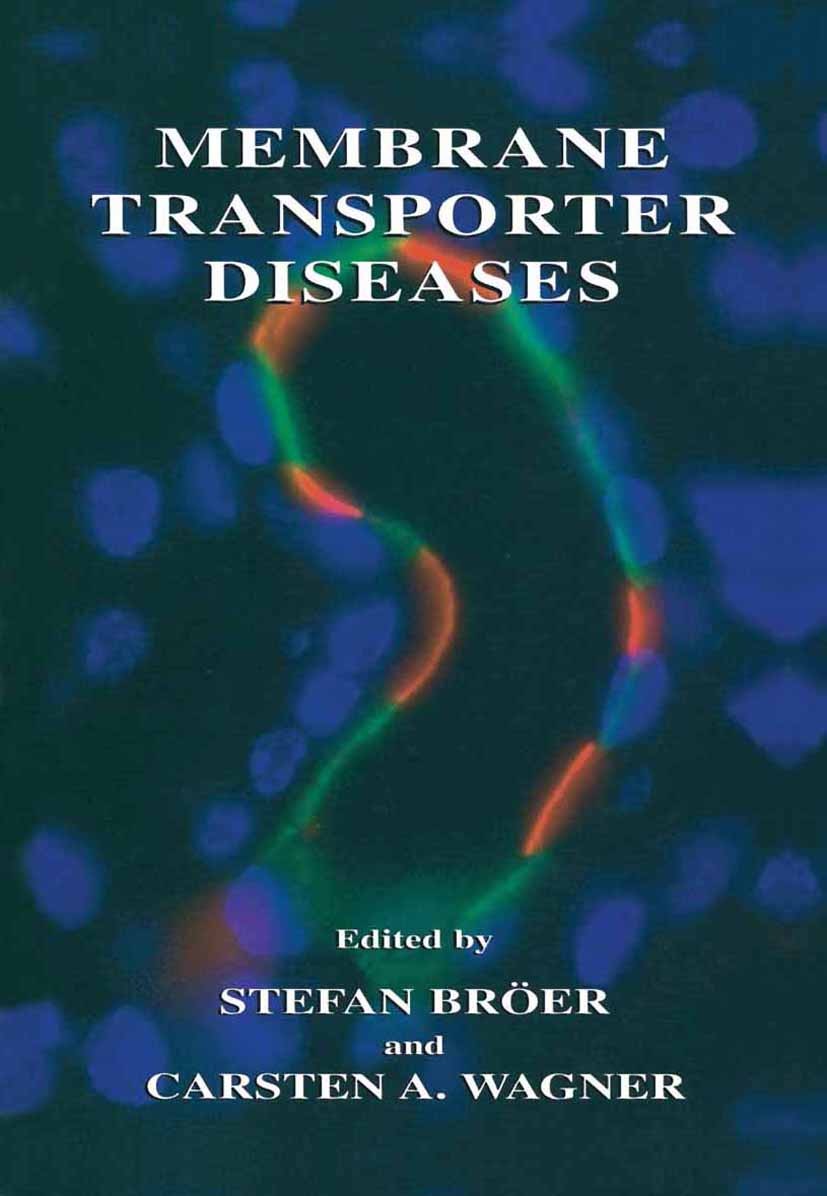| 書目名稱 | Membrane Transporter Diseases | | 編輯 | Stefan Br?er,Carsten A. Wagner | | 視頻video | http://file.papertrans.cn/631/630413/630413.mp4 | | 圖書封面 |  | | 描述 | Every cell and organism faces the problem of spaces, made up of the two leaflets of the lipid generating a confined space in which metabolic bilayer. The importance of traffic and signaling across membranes is reflected by the estimate and anabolic reactions take place and at the same time allowing entry and exit of metabo- that 20% of all genes in the human genome encode membrane proteins. A failure of any of lites, ions, proteins, and signals across its bor- der. Evolution has solved the problem by these proteins may have dramatic con se- generating lipid membranes that contain trans- quences for ceH function. In recent years much porters, ion channels, and receptors. In eukary- attention has been paid to diseases resulting otic cells, this problem is exacerbated by the from nonfunctional ion channels ("chan- presence of multiple organelles, which are con- nelopathies"). Not surprisingly, many of these fined spaces in their own right. Even the lipid diseases affect the excitability of cells. membrane consists of two relatively separate Transporter diseases (perhaps coined "carrier vi PREFACE diseases") are more related to metabolic dis- Each chapter is concluded by a summary, and | | 出版日期 | Book 2003 | | 關鍵詞 | ATP; Amino acid; Aspartat; Glutamat; Glycogen; Oxidation; dopamine; pathophysiology; physiology; Tree Biology | | 版次 | 1 | | doi | https://doi.org/10.1007/978-1-4419-9023-5 | | isbn_softcover | 978-1-4613-4761-3 | | isbn_ebook | 978-1-4419-9023-5 | | copyright | Springer Science+Business Media New York 2003 |
The information of publication is updating

|
|
 |Archiver|手機版|小黑屋|
派博傳思國際
( 京公網(wǎng)安備110108008328)
GMT+8, 2025-10-11 10:55
|Archiver|手機版|小黑屋|
派博傳思國際
( 京公網(wǎng)安備110108008328)
GMT+8, 2025-10-11 10:55


